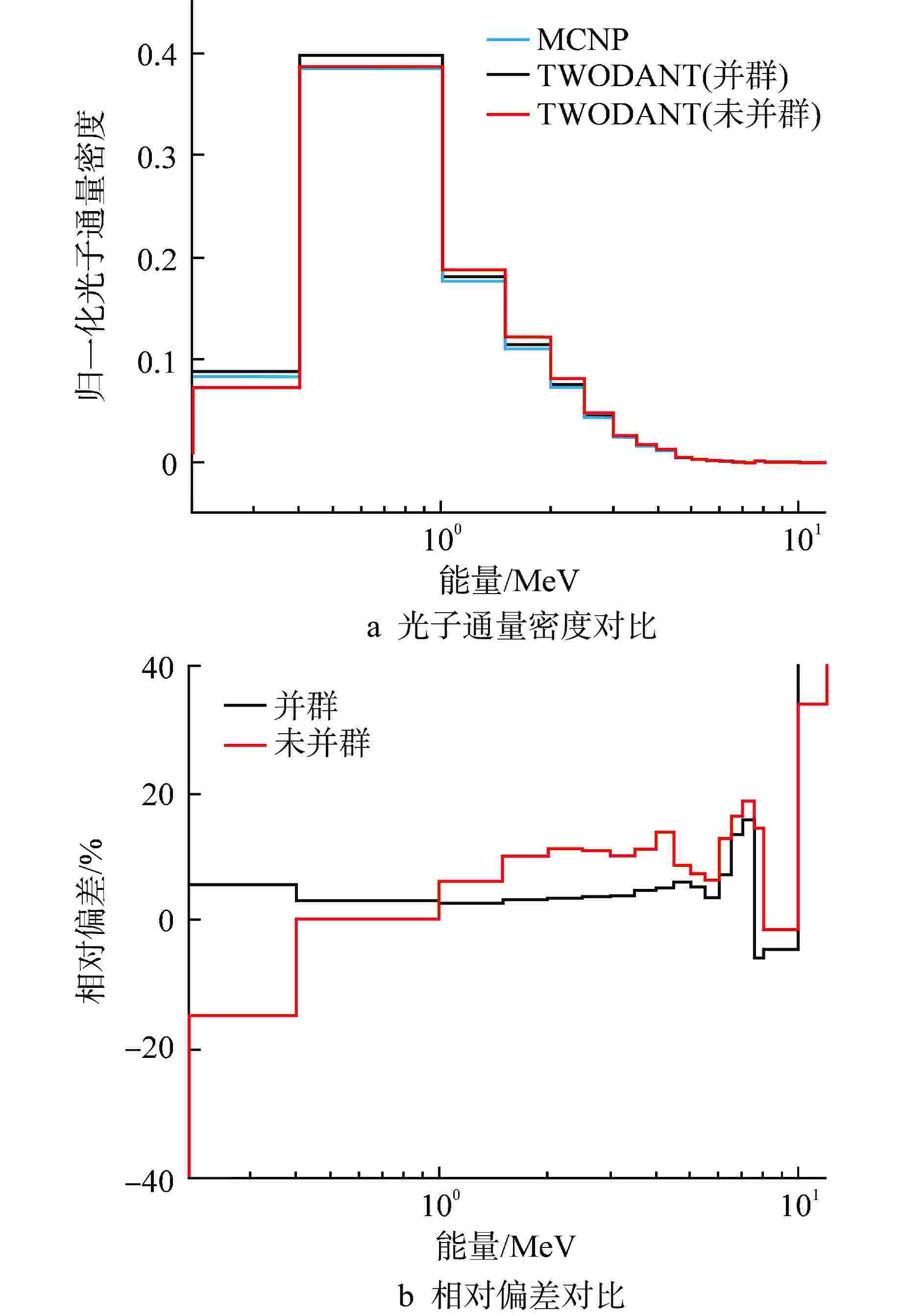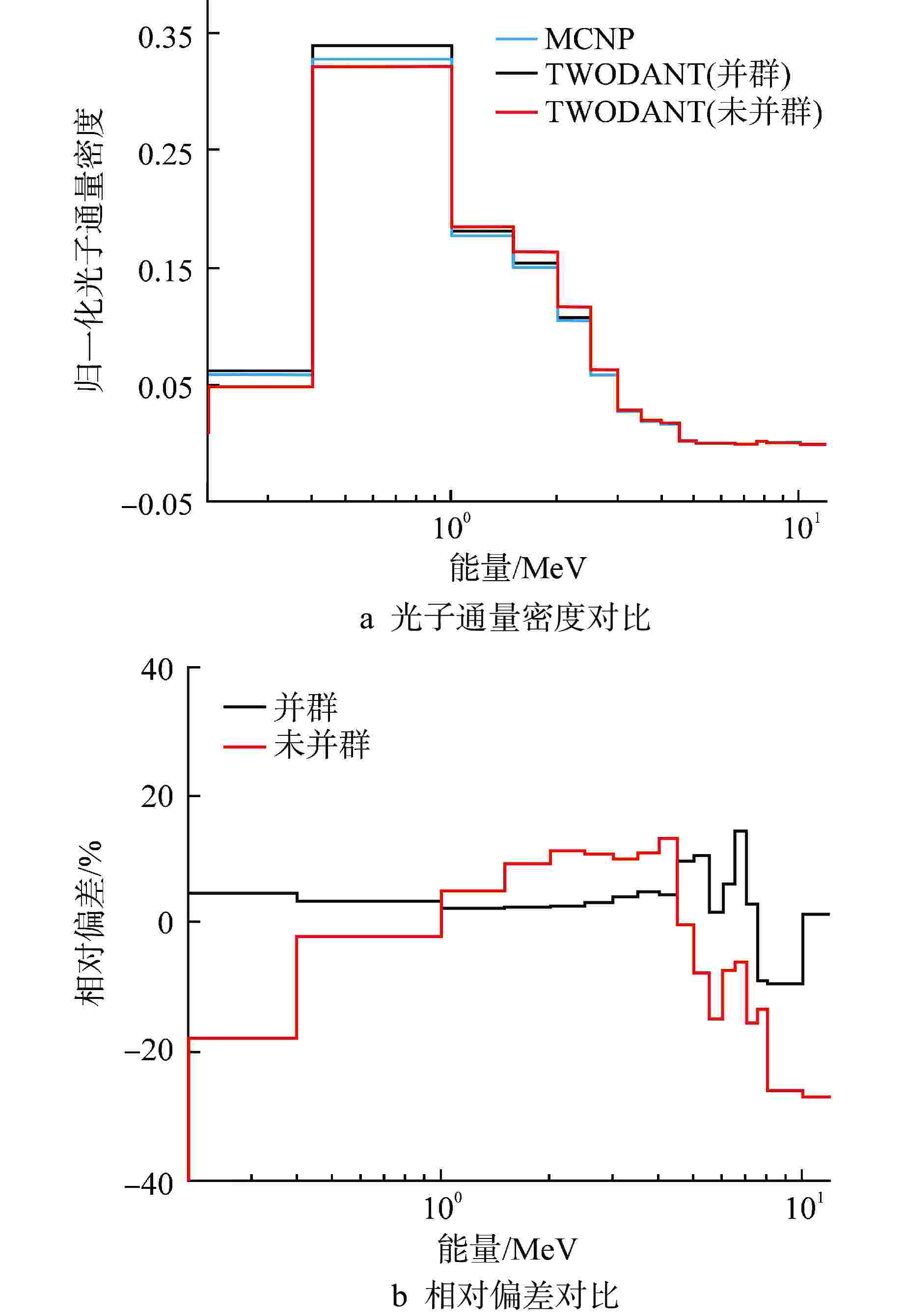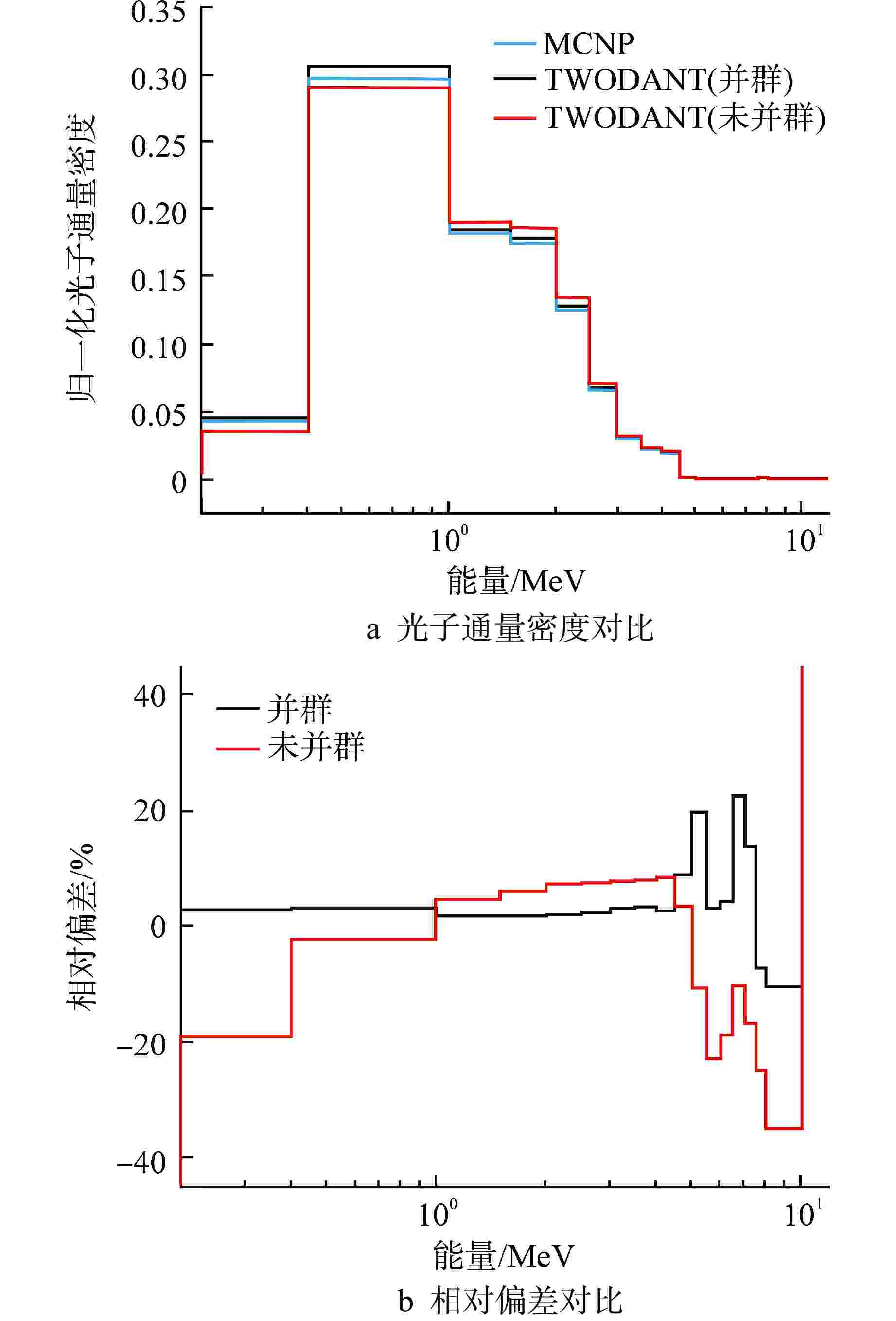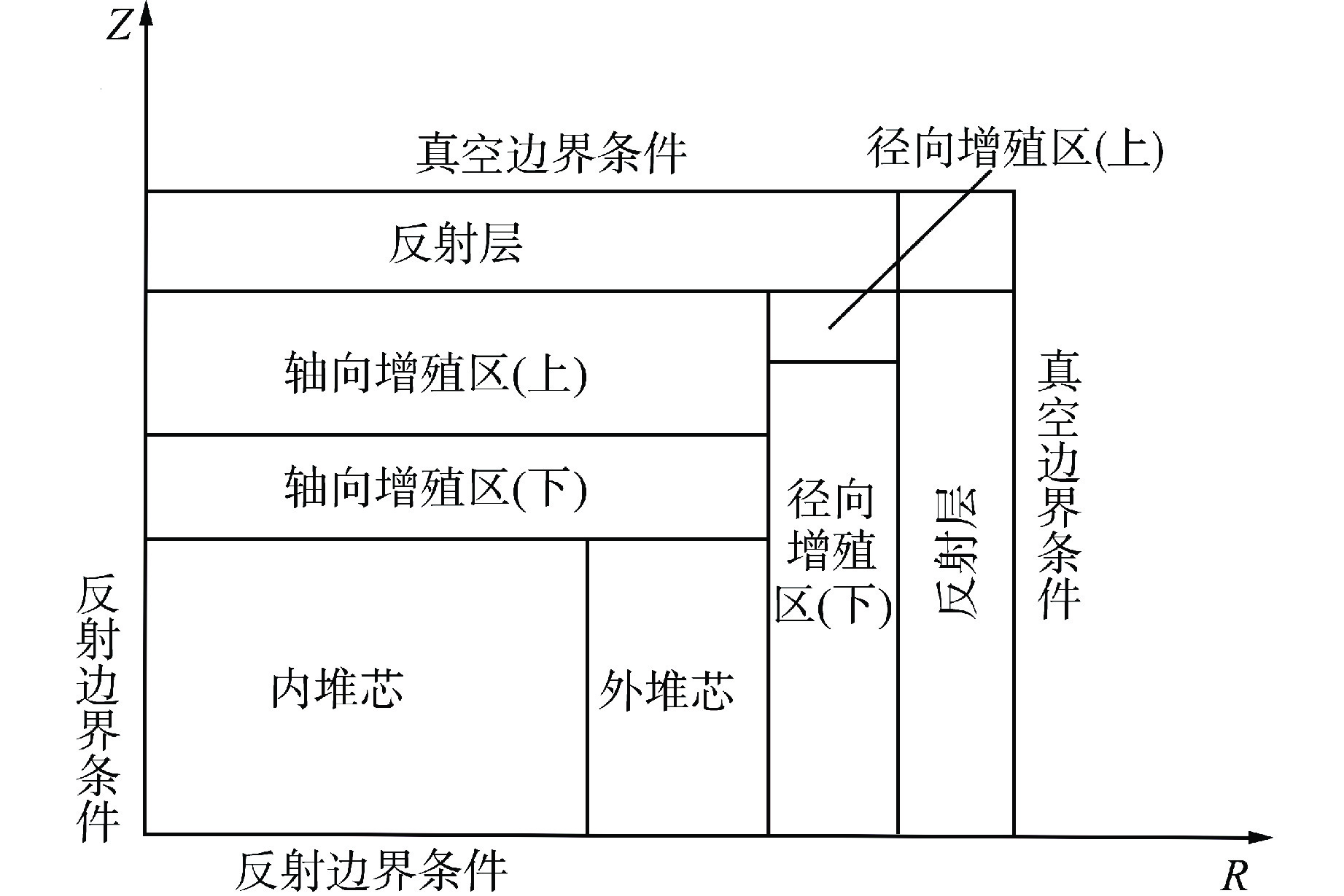Analysis of Photon Heating Behavior in Fast Reactor Based on NGAMMA
-
摘要: 为了提高快能谱反应堆光子释热计算精度,本文研究了高精度光子截面制作理论与光子释热计算方法,基于自主开发的光子截面处理程序NGAMMA,制作生成了问题相关光子截面库。该截面库主要包括中子与光子比释动能(KERMA)因子、光原子反应截面、瞬发光子产生截面、缓发光子产生截面等数据。使用快堆基准题ZPPR-9对数据库进行验证,计算结果表明:①利用新开发的94群光子截面库通过并群得到问题相关的光子截面库,比之前利用NJOY直接生成21群光子截面的计算精度有显著提高,光子释热的计算结果在增殖区与蒙特卡罗结果的相对偏差由原来的–7.88%下降到3%以内,反射层区域的相对偏差由原来的14.76%下降到5.05%;②考虑缓发光子显著影响光子释热,与仅考虑瞬发光子相比,考虑缓发光子使得内外堆芯区域的光子释热提升达到33.11%;③使用比例因子方法近似计算缓发光子释热与精确计算的结果符合较好,在各个区域的相对偏差均在±2%以内。Abstract: In order to improve the accuracy of photon heat release calculation for fast reactors, this paper studies the theory of high-precision photon cross-section production and the method of photon heat release calculation, and a library of photon cross-section related to the problem based on the self-developed photon cross-section processing code NGAMMA is generated. The cross-section library mainly includes neutron-photon ratio kinetic energy release (KERMA) factor, photo-atomic reaction cross-section, prompt photon production cross-section, delayed photon production cross-section and other data. The library is verified using the fast reactor benchmark problem ZPPR-9, and the computational results show that: (1) the computational accuracy of using the newly developed 94-group photon cross-section library to obtain the problem-related photon cross-section library by merging groups is significantly improved over the previous computational accuracy of directly generating the 21-group photon cross-section by utilizing NJOY. The relative deviation of the calculated results of photon heat release from the Monte Carlo results in the blanket region is reduced from −7.88% to less than 3%, and the relative deviation in the reflector region is reduced from 14.76% to 5.05%; (2) Consideration of delayed photon significantly affects the photon heat release, and compared with the consideration of prompt photon only, the consideration of delayed photon leads to an improvement of photon heat release in the inner and outer core regions by 33.11%; (3) The approximate calculation of the heat release of delayed photons by using the scaling factor method is in good agreement with the exact calculation results, and the relative deviation in each region is within ±2%
-
Key words:
- Fast reactor /
- Photo cross sections /
- NGAMMA /
- Coupled neutron and photon /
- Delayed photon
-
表 1 ZPPR-9基准题的keff对比
Table 1. keff Comparison of ZPPR-9 Benchmark
截面库 计算程序 keff 绝对偏差/pcm ACE(B7.1) MCNP 0.98645 1968n×94γ MGGC+TWODANT 0.98754 109 表 2 基于NJOY直接制作的21群光子库计算的归一化光子释热与MCNP计算结果的对比
Table 2. Comparison of Normalized Photon Heating with MCNP Calculations Based on 21-group Photon Library Produced by NJOY
组件类型 归一化光子释热 相对偏差/% MCNP GSORCAL 内堆芯 5.011×10−2 4.933×10−2 −1.55 外堆芯 3.177×10−2 3.163×10−2 −0.44 径向增殖区(下) 8.256×10−3 8.066×10−3 −2.30 径向增殖区(上) 1.355×10−4 1.266×10−4 −6.57 轴向增殖区(下) 7.494×10−3 7.246×10−3 −3.30 轴向增殖区(上) 2.580×10−3 2.377×10−3 −7.88 反射层 9.900×10−4 1.130×10−3 14.76 表 3 基于94群光子结构并群制作的21群光子库计算的归一化光子释热与MCNP计算结果的对比
Table 3. Comparison of Normalized Photon Heating with MCNP Calculations Based on 21-group Photon Library Produced from a 94-group Photon Structure
组件类型 归一化光子释热 相对偏差/% MCNP GSORCAL 内堆芯 5.011×10−2 5.107×10−2 1.91 外堆芯 3.177×10−2 3.266×10−2 2.80 径向增殖区(下) 8.256×10−3 8.480×10−3 2.72 径向增殖区(上) 1.355×10−4 1.331×10−4 −1.75 轴向增殖区(下) 7.494×10−3 7.588×10−3 1.26 轴向增殖区(上) 2.580×10−3 2.504×10−3 −2.96 反射层 9.900×10−4 1.040×10−3 5.05 表 4 考虑缓发光子后的光子释热对比
Table 4. Comparison of Photon Heating after Considering Delayed Photon
组件类型 归一化光子释热 相对偏差/% 瞬发光子 瞬发+缓发光子 内堆芯 5.107×10−2 6.573×10−2 28.72 外堆芯 3.266×10−2 4.347×10−2 33.11 径向增殖区(下) 8.480×10−3 9.139×10−3 7.77 径向增殖区(上) 1.331×10−4 1.361×10−4 2.25 轴向增殖区(下) 7.588×10−3 8.116×10−3 6.96 轴向增殖区(上) 2.504×10−3 2.506×10−3 0.08 反射层 1.040×10−3 1.040×10−3 0 表 5 精确计算与比例因子方法计算的光子释热对比
Table 5. Comparison of Photon Heating from Exact Calculations and Scale Factor Methods
组件类型 归一化光子释热 相对偏差/% 精确计算 比例因子 内堆芯 6.573×10−2 6.530×10−2 −0.66 外堆芯 4.347×10−2 4.284×10−2 −1.47 径向增殖区(下) 9.139×10−3 9.209×10−3 0.76 径向增殖区(上) 1.361×10−4 1.364×10−4 0.18 轴向增殖区(下) 8.116×10−3 8.173×10−3 0.69 轴向增殖区(上) 2.506×10−3 2.510×10−3 0.16 反射层 1.040×10−3 1.050×10−3 0.96 -
[1] YANG W S. Fast reactor physics and computational methods[J]. Nuclear Engineering and Technology, 2012, 44(2): 177-198. doi: 10.5516/NET.01.2012.504 [2] ROHANDA A, WARIS A, KURNIADI R, et al. Validation and improvement of gamma heating calculation methods for the G. A. Siwabessy multipurpose reactor[J]. Nuclear Science and Techniques, 2020, 31(11): 112. doi: 10.1007/s41365-020-00824-4 [3] RULLHUSEN P. Nuclear data needs for generation IV nuclear energy systems[M]. New Jersey: World Scientific, 2006: 32-56. [4] PARK H, JEON B K, YANG W S, et al. Verification and validation tests of gamma library of MC2-3 for coupled neutron and gamma heating calculation[J]. Annals of Nuclear Energy, 2020, 146: 107609. doi: 10.1016/j.anucene.2020.107609 [5] 陈建达,郑友琦,杜夏楠,等. 基于SARAX-LAVENDER的快堆光子释热行为分析[J]. 现代应用物理,2021, 12(1): 10210. [6] ZHANG T, MA X B, JIA G Q, et al. Development and verification of neutron and photon ultrafine group library for fast reactor physical calculation[C]//American Society of Mechanical Engineers. Proceedings of 29th International Conference on Nuclear Engineering. Online, August 8–12, 2022. [7] DENG P, JEON B K, PARK H, et al. Coupled neutron and gamma heating calculation based on VARIANT transport solutions[J]. Nuclear Science and Engineering, 2019, 193(12): 1310-1338. doi: 10.1080/00295639.2019.1621617 [8] JIA X Q, ZHENG Y Q, DU X N, et al. Verification of SARAX code system in the reactor core transient calculation based on the simplified EBR-II benchmark[J]. Nuclear Engineering and Technology, 2022, 54(5): 1813-1824. doi: 10.1016/j.net.2021.10.045 [9] HU K, MA X B, ZHANG T, et al. MGGC2.0: a preprocessing code for the multi-group cross section of the fast reactor with ultrafine group library[J]. Nuclear Engineering and Technology, 2023, 55(8): 2785-2796. doi: 10.1016/j.net.2023.05.005 [10] LÜTHI A, CHAWLA R, RIMPAULT G. Improved gamma-heating calculational methods for fast reactors and their validation for plutonium-burning configurations[J]. Nuclear Science and Engineering, 2001, 138(3): 233-255. doi: 10.13182/NSE01-A2211 [11] PANIZO S, ÁLVAREZ-VELARDE F. Evaluation of the impact of the nuclear data library cinder. dat in MCNP burn-up calculations[J]. Progress in Nuclear Energy, 2023, 155: 104503. doi: 10.1016/j.pnucene.2022.104503 [12] 祖铁军,徐宁,尹文,等. 核数据处理软件NECP-Atlas中的光子相关数据计算方法研究[J]. 原子能科学技术, 2022, 56(5): 969-977.祖铁军, 徐宁, 尹文, 等. 核数据处理软件NECP-Atlas中的光子相关数据计算方法研究[J]. 原子能科学技术, 2022, 56(5): 969-977. [13] CHADWICK M B, HERMAN M, OBLOŽINSKÝ P, et al. ENDF/B-VII. 1 nuclear data for science and technology: cross sections, covariances, fission product yields and decay data[J]. Nuclear Data Sheets, 2011, 112(12): 2887-2996. doi: 10.1016/j.nds.2011.11.002 [14] PARK H, YANG W S, SMITH M A, et al. Verification and validation tests of the Gamma library of the ARC software package (Rev. 1): ANL/NSE-19/22 Rev. 1[R]. Argonne: Argonne National Laboratory, 2022. [15] JEON B K, YANG W S, LEE C H. Improved gamma yield and interaction cross-section libraries of MC2-3[C]. Las Vegas: Transactions of the American Nuclear Society, 2016(115): 1299-1302. [16] LEE C. Verification of the MC2-3 Gamma library: ANL-18/28[R]. Argonne: Argonne National Laboratory, 2018. [17] SALVATORES M, PALMIOTTI G, ALIBERTI G, et al. Methods and issues for the combined use of integral experiments and covariance data: results of a NEA international collaborative study[J]. Nuclear Data Sheets, 2014, 118: 38-71. doi: 10.1016/j.nds.2014.04.005 [18] 黄自锋. 共振峰重构与快堆超精细能群截面制作方法研究[D]. 北京: 华北电力大学(北京),2021. [19] ALCOUFFE R E, BRINKLEY F W, MARR D R, et al. User’s guide for TWODANT: a code package for two-dimensional, diffusion-accelerated, neutral-particle transport: LA-10049-M[R]. Los Alamos: Los Alamos National Laboratory, 1984. -





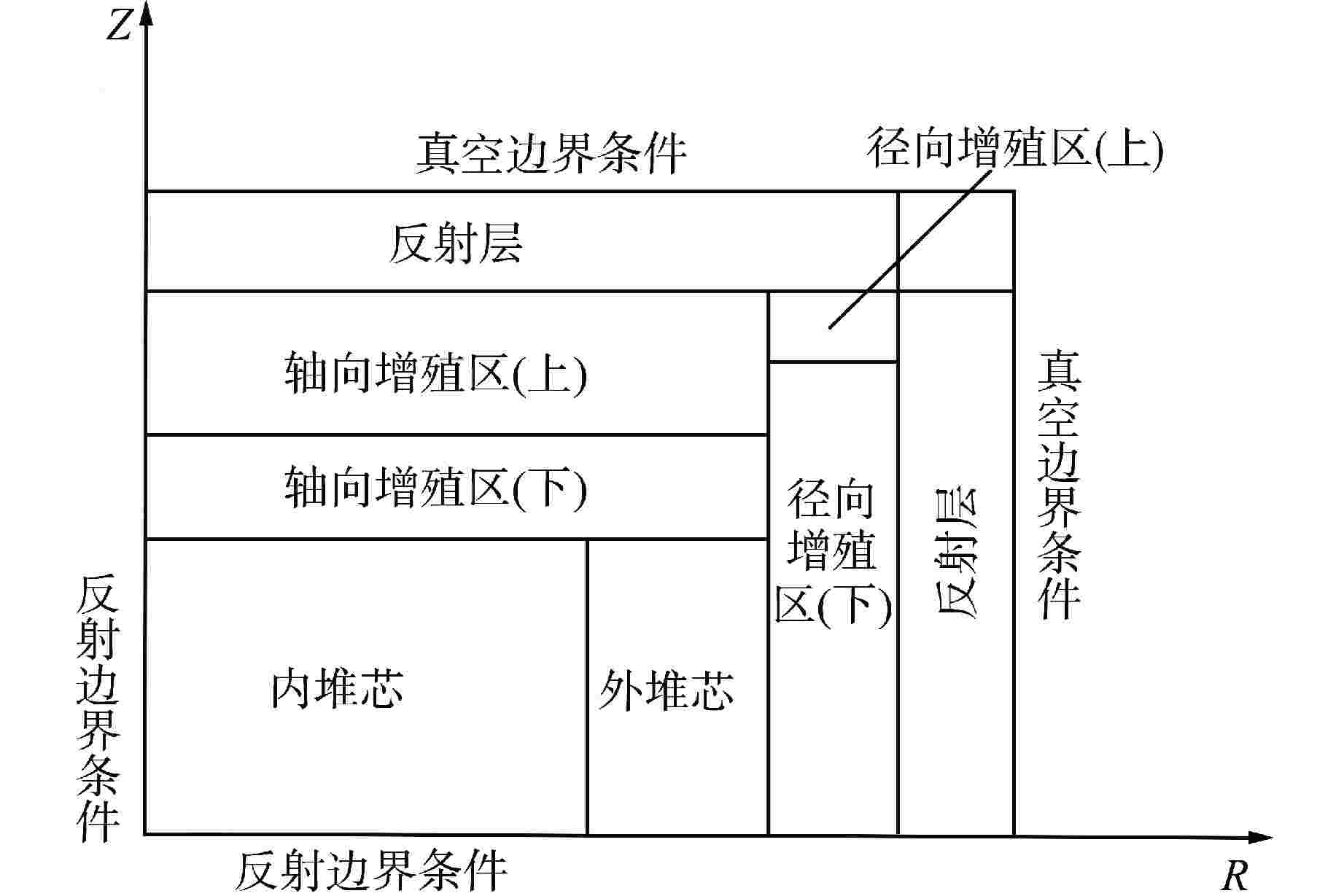
 下载:
下载:

